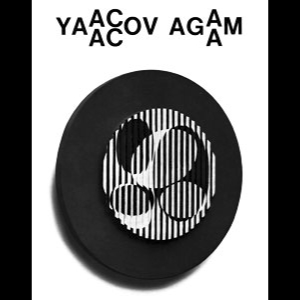Description
Edition Bierammer, Austria 2024
Edition of 250 copies with Yves Klein Blue innersleeve and A4 insert with score.
First ever release of Yves Klein’s groundbreaking conceptual symphonie “Monoton-Silence” conceived 1947-1948. Scored for 20 singers, 10 violins, 10 cellos, 3 double basses, 3 trumpets, 3 flutes and 3 oboes, the piece consists of a single 20-minute sustained D major chord followed by a 20-minute silence.
The Symphonie ”Monoton-Silence” was a precedent to Klein’s later monochrome paintings and to the work of minimal musicians & composers, particularly La Monte Young’s drone music or John Cage’s 4′33″ and transforms Klein’s monochromatic paintings and sculpture into a monotone auditory experience.
Performed April 1998 at Chapelle Ste Reita, Paris
Conducted by Philippe Arrii Blachette
Yves Klein (1928-1962) was the most influential, prominent, and controversial French artist to emerge in the 1950s. A leading figure of Nouveau Réalisme, Klein developed a ground-breaking practice that broke down boundaries between conceptual art, sculpture, painting, and performance. He is remembered above all for his use of a single color, the rich shade of ultramarine that he made his own: International Klein Blue. But the success of his sadly short-lived career lay in attacking many of the ideas that underpinned the abstract painting that had been dominant in France since the end of the Second World War. Animated by a quest to ‘liberate colour from the prison that is the line’, Yves Klein directed his attention to the monochrome which, to him, was the only form of painting that allowed to ‘make visible the absolute’. By choosing to express feeling rather than figurative form, he moved beyond ideas of artistic representation. His practice revealed of new way of conceptualizing the role of the artist, conceiving his whole life as an artwork.
“In 1947, at a time when the consequences of Schönbergian compositional technique were still being heatedly debated and wrestled with in new music circles, the young man from Nice was thinking up a symphony that refrains from all development. It was composed of a single consonant sound – at rest in itself – that is sustained for twenty minutes, followed by a silence of equal length in which the sounding tone completely dissolves, leading beyond reverberations into the immateriality of sound space. Yves Klein himself saw the »Symphonie Monoton« as his central work, whose »subject is what I wanted to make of my life.« Everything that would characterize his future work is already apparent in this symphony. In the reduction to one sound and the following silence, Klein anticipates the effect of his monochromes, while the concept of the symphony points toward his aim of dematerializing art. From today’s standpoint, one might be tempted to see Yves Klein’s work as a precedent for the avant-garde formulations of the ’60s. A great deal of what he introduced would have a later evolution, although much was developing synchronously.” – Valerian Maly
“During this period of concentration, I created, around 1947–1948, a monotone symphony whose theme expresses what I wished my life to be. This symphony of forty minutes duration (although that is of no importance, as one will see) consisted of one unique continuous sound, drawn out and deprived of its beginning and of its end, creating a feeling of vertigo and of aspiration outside of time. Thus even in its presence, this symphony does not exist. It exists outside of the phenomenology of time because it is neither born nor will it die, after existence. However, in the world of our possibilities of conscious perception, it is silence – audible presence.” – Yves Klein “Overcoming the problematics of Art”, 1959
“Silence … This is really my symphony and not the sounds during its performance. This silence is so marvelous because it grants happenstance and even sometimes the possibility of true happiness, if only for only a moment, for a moment whose duration is immeasurable.” – Yves Klein “Truth becomes Reality”, 1960






